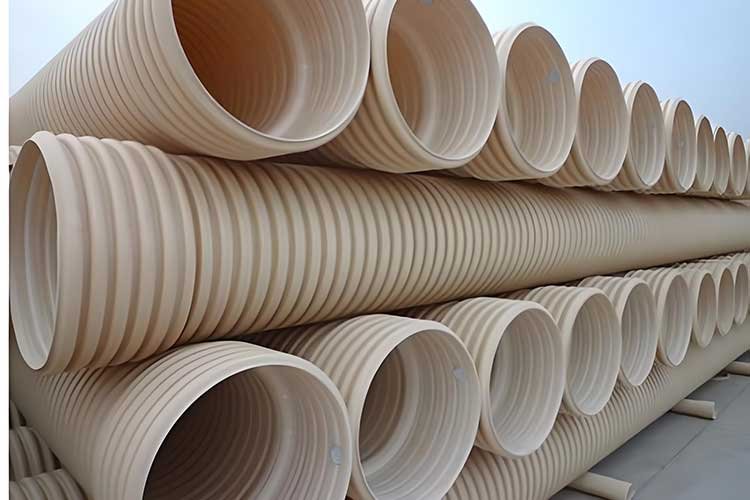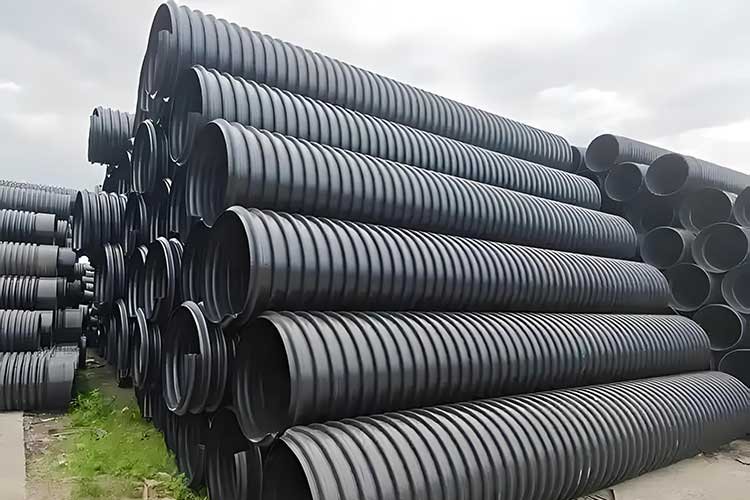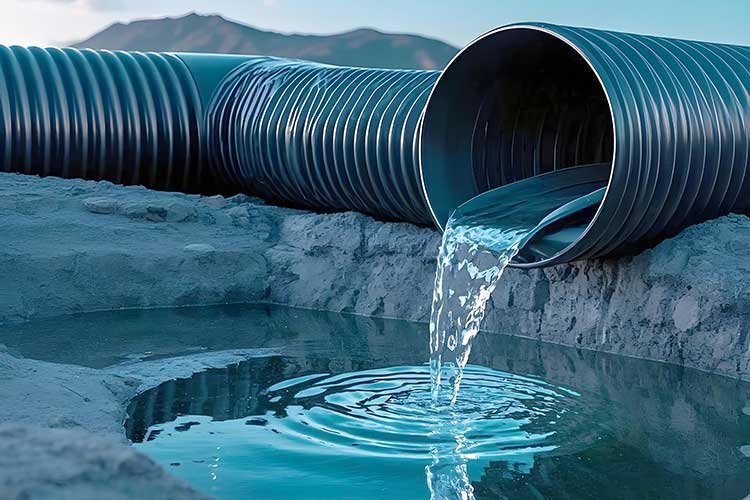In large-scale engineering projects, corrugated pipes are essential protective conduits for power, communications, and other systems. PVC and HDPE corrugated pipes are very similar in appearance, often confusing each other. However, these two types of pipes differ fundamentally in material, performance, and applicable scenarios. Choosing the wrong type can not only lead to project quality issues but also increase subsequent maintenance costs. This article systematically analyzes the core differences between the two.
What is PVC corrugated pipe?

PVC corrugated pipe is a pipe made of polyvinyl chloride (PVC) resin as the main raw material. Its structural characteristics are a smooth inner wall and a corrugated annular groove on the outer wall. It is manufactured by extrusion blow molding or twin-screw extrusion molding.
What is HDPE corrugated pipe?

HDPE corrugated pipe is a plastic pipe made of high-density polyethylene (HDPE). Its outer wall is annular corrugated structure and the inner wall is smooth. It has the characteristics of light weight, high strength and corrosion resistance.
The difference between PVC corrugated pipe and HDPE corrugated pipe

There are obvious differences between PVC corrugated pipe and HDPE corrugated pipe, the most obvious of which are:
Material
PVC corrugated pipes are made of polyvinyl chloride resin as the main raw material, which has high hardness and strong rigidity; HDPE corrugated pipes are made of high-density polyethylene, which is a crystalline non-polar material with better flexibility and impact resistance. The difference in the nature of these materials directly affects their mechanical properties and applicable environments.
Mechanical properties and environmental resistance
In terms of compression resistance and toughness, ordinary PVC corrugated pipes have high compressive strength but are relatively brittle and easily break under violent impact. HDPE pipes, on the other hand, offer excellent toughness and are resistant to ground subsidence and deformation. It is worth noting that some PVC corrugated pipes with improved processing technology (such as Caitong PVC solar corrugated pipes) currently demonstrate outstanding toughness and impact resistance.
In terms of temperature adaptability, ordinary PVC pipes are generally suitable for temperatures between -5°C and 60°C, but are prone to brittleness at low temperatures. However, the solar corrugated pipe series can withstand the harsh temperature range of -15°C to +105°C. HDPE pipes have a wider temperature range (-40°C to 60°C), making them particularly suitable for areas with high altitudes or large temperature fluctuations.
In terms of weather resistance and lifespan, HDPE pipes offer excellent UV and aging resistance, with some having a lifespan exceeding 50 years. Ordinary PVC pipes are prone to brittleness due to long-term exposure to sunlight, but the solar-specific series offers superior weather resistance and a longer lifespan.
Electrical performance and applicable systems
In electrical engineering, the roles of two types of pipes are clearly defined:
PVC corrugated pipe: Mostly used for protecting general power and communication lines, particularly suitable for surface-mounted or fixed installations.
HDPE corrugated pipe: In addition to its insulating properties, some HDPE pipes can incorporate shielding features, making them suitable for communication systems or power cables that require interference protection. Its flexibility also makes it more suitable for traversing complex terrain or trenchless construction.
Chemical corrosion resistance and application environment
HDPE pipes exhibit superior resistance to acids, alkalis, and chemical corrosion, and can even be used to transport certain chemical media.
PVC pipes also have good corrosion resistance to most inorganic acids, alkalis, and salts, but may be susceptible to corrosion in organic solvent environments.
Application
PVC corrugated pipe is primarily used in electrical and telecommunications engineering: as a protective conduit for power cables, it offers excellent insulation properties, preventing short circuits and electrical leakage. HDPE corrugated pipe, on the other hand, is primarily used in municipal underground drainage and sewage systems: it offers strong compressive strength (ring stiffness SN ≥ 4/8 kN/m²), is resistant to ground settlement, and is a viable alternative to traditional cement and cast iron pipes.
Conclusion
While similar, PVC and HDPE corrugated pipes are actually quite different. A fundamental distinction you must always keep in mind is that PVC corrugated pipe is used for wire and cable conduits (indoor and outdoor), control cabinets, and telecommunications equipment. HDPE corrugated pipe, on the other hand, is used for underground projects, agriculture, and industry.
This and other differences will help you choose the right option based on project size, environmental performance, and budget.